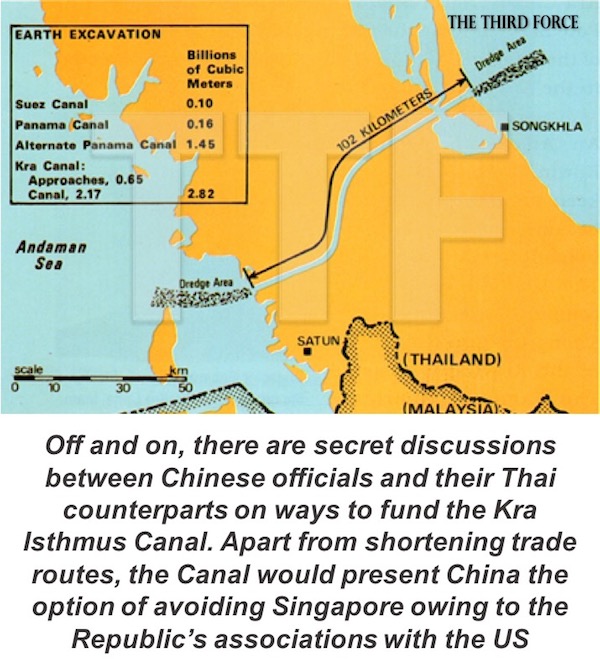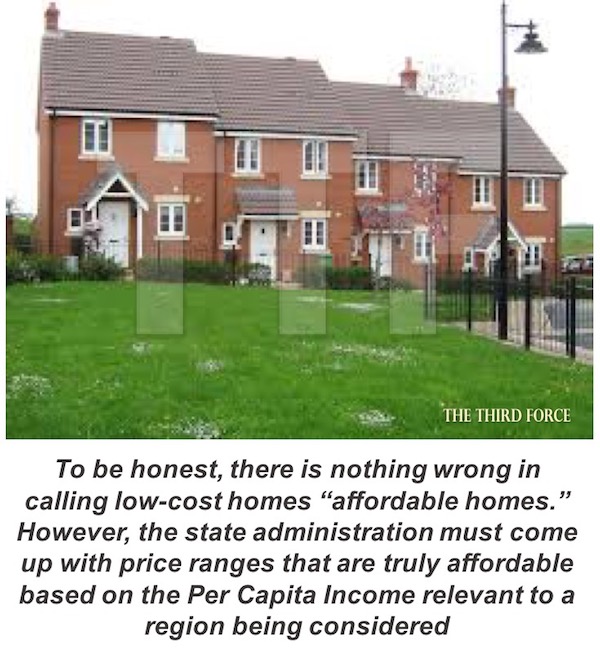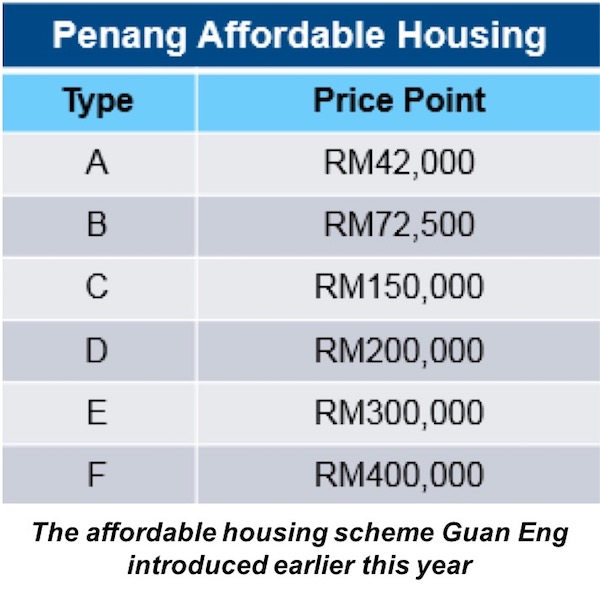Political expediency can be a very funny thing. It led me to withhold part of a story that should have been told a very, very long time ago. Today, I have decided to screw expediency and tell that story in favour of justice. Today, for the first time ever, Malaysians will get to know why Lim Kit Siang is an enemy of the state, and how a decision he made in 1985 had a bearing on lives that were lost just yesterday, the 21st of October 2017.
THE THIRD FORCE
On the 13th of June 2009, a year after the DAP-led opposition coalition marched into Komtar to form a state government, a high-profile Singaporean Minister met Lim Guan Eng and several of his excos. That Minister was none other than the late Lee Kuan Yew, the man who came up with the Northern State Entrepôt (NSE) concept, a long-range mission he contrived together with Lim Kit Siang in 1985.
The sole purpose of the NSE was to establish a PAP-DAP nexus of “political dominions” that would stretch all the way through major port-bearing constituencies along the Straits of Malacca, extending right up to Hong Kong through the South China Sea. Kuan Yew had in mind the establishment of a northern trade entrepôt to compliment Singapore’s own as part of the PAP’s long-term mission of mediating China’s energy trade with the Middle East.
Yes, while George Soros and the global elites are dead against the idea of any Malaysian leader venturing with China in energy trade, exploration or supply, Kit Siang was already told back in the mid-eighties that the United States (US) flagged Malaysia as a nation of utmost priority, given that the country was nested right in the epicentre of China’s trade gateways – the South China Sea and the Malacca Straits.
When Kuan Yew met Kit Siang 23 years ago, he stressed the need for the DAP to “wrest control of the Malaysian West Coast and the island state of Penang” by whatever means necessary. The senior Lim was told that the Chinese were dead against the idea of working with Singapore to secure a monopoly in Middle Eastern oil trade as the island republic was deemed American ‘sponsored’.

Kwan Yew wanted to use the DAP’s eventual control of trade in the Malacca Straits to convince the Chinese not to build the canal. To make sure Dr Mahathir Mohamed remained at bay, the then Singaporean premier told Kit Siang to establish working relationships with PAP sponsored evangelist groups stationed in Sabah, Sarawak, Malacca and Penang.
The plan was for the senior Lim to pit the Chinese in the West Coast of the peninsula and the non-Muslims in Sabah and Sarawak against Islam. According to Kuan Yew, the more the Chinese hated Islam, the more they would hate UMNO and ultimately, Mahathir. The Singaporean premier made very clear the need for Penang to be turned into the NSE assuming the DAP wrested control of the state.

Kit Siang spoke of the Singaporean Twin City (STC) concept and the West Coast Agenda (WCA) to the evangelists and explained why their activities needed to be headquartered in Penang. Kuan Yew, who was himself anti-Islam, stressed that Penang needed to be transformed into a rich man’s enclave to drive “underachievers out” of the island state. When he met Guan Eng in 2009, not many know that his mission was to find out what the DAP planned to do about the STC and the WCA.
So you see, Kit Siang had planned since 1985 to turn the Island state of Penang into a rich man’s enclave and a mini-Singapore. The plan had all along been to drive “underachievers” out by allotting land on the island to super-rich developers in quid pro quos involving land reclamation. Kit Siang is the least bit concerned that the cost of living in Penang began charting an exponential curve right after Kuan Yew paid a visit to Komtar.
He knows, as probably does Guan Eng, that the PAP government of Singapore will allot massive funds to help the DAP repurchase parcels of land Guan Eng virtually ‘donated’ to private developers. But to earn those funds, the DAP must make sure Pakatan Harapan captures Perak, Malacca, Negeri Sembilan and major constituencies situated along the West Coast and southernmost regions of Johor. Convinced that the DAP would have no problems fulfilling three of the criteria, Guan Eng began to slice hillslopes on the island state as if there were no tomorrow.
Now let’s fast forward to the landslide that occurred just yesterday in Lengkok Lembah Permai, Tanjung Bungah. The affected area is a worksite purportedly having to do with the construction of “affordable homes” for Penangits. Now, let’s find out from the state’s Housing, Town and Country Planning Committee Chairman what the term “affordable homes” truly entails.
On the 19th of January 2017, the person in question, Jagdeep Singh Deo, announced the state government’s decision to ‘rebrand’ low and medium-cost houses as “affordable homes.” With the rebranding, houses costing RM42,000 each are now referred to as “affordable housing type A” (or AHTA), while medium-cost houses priced at RM72,000 are known as “affordable housing type B” (or AHTB). So you see, the term “low-cost” no longer exists in Guan Eng’s textbooks.

But the Guan Eng administration did none of that. Still, Jagdeep seemed to have a good reason why the state resorted to calling low-cost homes “affordable homes.” According to him, the term “low-cost” had a “very negative connotation” to it and would bring undue “stigma to the purchasers of such units.” He told newsmen that it would be improper to burden purchasers with such a stigma as they would “inevitably be first-time house buyers.”
Now, the impression given by Jagdeep was that the state administration did not discriminate against people from the lower income segment. He implied that these people would be able to purchase low-cost homes on the island owing to the state government’s caring attitude and commitment towards the welfare of all Penangites.
Well, let’s see.
Currently, there are several housing projects on the island that are either underway, about to commence or were recently completed. The Guan Eng administration is responsible for five of those projects (hereinafter referred to as “LGE Island Projects”), while a remaining 34 or so (hereinafter referred to as “Private Island Projects”) are associated with cash-rich developers, the likes of Hunza Group (Hunza) and companies linked one way or the other to Tan Sri Tan Kok Ping and the founder of Hunza himself, Dato’ Seri Khor Teng Tong.
Now, none of the LGE Island Projects and Private Island Projects involve the construction of AHTA. However, these projects – virtually all of them – are listed as affordable projects or schemes, meaning, they either have affordable units or are made up entirely of AHTA and AHTB. But a quick check into some price listings told a very, very different story.
To illustrate this point, I refer you to a housing project by Visa Fleet Sdn Bhd (Visa Fleet) at Sungai Nibong, which listed all 67 units being built as “affordable.” However, the indicative price of each “affordable” unit was nothing less than RM300,000, which, if you ask me, is neither affordable nor within range of prices associated with AHTA and AHTB schemes. Question is, did Visa Fleet err with its listing?
Apparently not.
The reason being, Guan Eng instructed Jagdeep to bundle together four other price categories within the so-called “affordable homes” scheme (below) and have them labeled types C to F. The new scheme allowed the state administration to sell homes at prices close to half a million and get off scot free by simply declaring them “affordable.”

Now do you understand the ‘rationale’ behind the state government’s ‘rebranding’ of low and middle-cost homes?
If you do, then understand also that the idea of rebranding these price categories did not originate from the Chief Minister alone. On the contrary, the plan to have these categories rebranded was jointly decided upon by Guan Eng, Hunza’s Khor Teng Tong and the de facto Chief Minister of Penang, Tan Kok Ping. Together, the trio inflated a housing bubble to a point that turned the island state into an enclave catered mainly for cash-rich Chinamen and Hong Kong billionaires.
With the Hongkies owning a great number of housing units on the island, the trio transformed Penang into a destination of choice for superstars, the likes of Jackie Chan and what have you, signalling to the Chinese government that Penang under the DAP ‘wasn’t that bad after all’. To convince Hongkies that Penang had a lot to offer, Kok Ping and Khor Teng made sure that most island projects, including the one at Lengkok Lembah Permai, were mega-scaled and built only along scenic hillslopes.
Yes, the affordable price listing (above) was meant to be “affordable” not to Malaysians, but to Hong Kong superstars, businessmen and even politicians who only need to fork out a tenth of what they would have had to pay in Hong Kong. To kill off businesses along pre-existing luxury enclaves in the Pulau Tikus area, the trio contrived a “Traffic Rationalization Plan” (hereinafter referred to as TRP) that involved Khor Teng’s prized accomplishment, Gurney Paragon Mall.
The TRP involved the rerouting of traffic in ways that forced motorists headed towards Persiaran Gurney to first pass Gurney Paragon. To accomplish this, the Chief Minister turned Jalan Kelawei, Jalan Gottlieb, Jalan Bagan Jermal and Persiaran Gurney into one-way streets and got the council to remove almost a hundred parking lots situated along them. The removal of these lots greatly inconvenienced the public and forced motorists to park their vehicles in the luxurious Beverly-Hill styled Gurney Paragon.

For now, let’s stick to the fact that the TRP was designed specifically to kill off lifestyle-themed businesses along Gurney Drive. As these businesses vanished, so did tourists, lured by mini enclaves that mushroomed in areas vicinal to the luxurious hillslope projects Guan Eng approved. As Penang graduated from becoming “the land of opportunity” to “the land for the super-rich Hongkies and Western tourists,” Kit Siang accomplished Kuan Yew’s dream of driving “underachievers” out from the island in no time at all.
Which is why, most of the low-cost housing projects approved by Guan Eng are actually based in hinterland Juru, Bukit Mertajam and Butterworth, areas many of you probably never even heard of. Malay businessmen whose makeshift stalls were torn down by the state administration were forced to migrate to these regions, while Chinese hawkers sprawled all over the street along Penang Road, Macalister Road and Chai Leng Park flourished despite the congestion their very existence caused.
After all, who would expect a Hongkie to enjoy Nasi Lemak, right?
Now, I really don’t give a damn how much the units at Lengkok Lembah Permai would eventually cost. RM100,000, 200,000, 300,000 or even 10,000, it makes no difference to me. What I would like to know is this – can the Hongkies bring back the Bangladeshis who lost their lives helping KIt Siang turn Penang into a STC?
Can you imagine how my heart broke when a Bangladeshi hugged me and said his life was over because he lost his dignity?



No comments:
Post a Comment
Note: Only a member of this blog may post a comment.